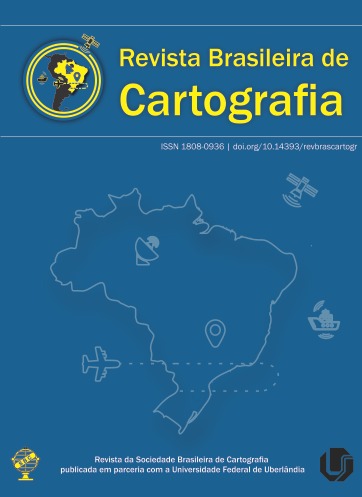Methodology Developed for the Geodetic Positioning of Special Airport Zone: Case Study of Recife/Guararapes International Airport - Gilberto Freyre
Main Article Content
Abstract
The Special Airport Zone (SAZ) is a region of specific guidelines which seeks to harmonize the county land use and occupancy legislation with the recommendations related to the Aerodrome Protection Plan regulated by Federal legislation. With increase and densification of the buildings around Airports, it becomes necessary a positional and dimensional control of the construction works in order to comply with the current legislation. This work aims to present a methodology developed for the geodetic positioning of the Special Airport Zone using the Recife / Guararapes-Gilberto Freyre International Airport as a case study. For the location of the virtual vertices of pathways intersections which is part of the SAZ traverse, reference points were placed by using the GNSS (Relative Static) positioning method, followed by a definition of a Local Geodetic System for the determination of points objects to delimit curbs applying the GNSS/RTK positioning method and identification of pathways axes and intersections respectively. At the end of this work the virtual vertices of a section of the SAZ traverse are determined, followed by a high standard qualitative analysis and identification of conflict areas, pointing recommendations regarding the positional criteria appropriate to the implementation of projects in the surroundings area of the Airport. The GNSS positioning of the reference points in module reached a standard deviation in the order ≤ 11mm, with the error of closing the network of the triangles formed with maximum discrepancy in the horizontal of 9mm and in the vertical of 29mm. The object points determined with GNSS/RTK reached a standard deviation in modulus of ≤ 18 mm.
Downloads
Metrics
Article Details
Authors who publish in this journal agree to the following terms:
- Authors retain copyright and grant the journal right of first publication with the work simultaneously licensed under a Creative Commons Attribution License that allows others to share the work with an acknowledgment of the work's authorship and initial publication in this journal.
- Authors can enter into separate, additional contractual arrangements for the non-exclusive distribution of the journal's published version of the work (e.g., post it to an institutional repository or publish it in a book), with an acknowledgment of its initial publication in this journal.
- Authors are permitted and encouraged to post their work online (e.g., in institutional repositories or on their website) before and during the submission process, as it can lead to productive exchanges, as well as earlier and greater citation of published work (see "The Effect of Open Access").





